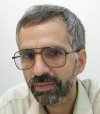| نویسندگان | منا عارف پور-محمد الماسی کاشی-عبد العلی رمضانی-امیرحسن منتظر |
|---|---|
| نشریه | NANOTECHNOLOGY |
| ارائه به نام دانشگاه | دانشگاه کاشان |
| نوع مقاله | Full Paper |
| تاریخ انتشار | 2016-5-01 |
| رتبه نشریه | ISI |
| نوع نشریه | چاپی |
| کشور محل چاپ | بریتانیا |
| نمایه نشریه | ISI |
چکیده مقاله
While a variety of template-based strategies have been developed in the fabrication of nanowires (NWs), a uniform pore filling across the template still poses a major challenge. Here, we present a large area controlled pore filling strategy in the reproducible fabrication of various magnetic and metallic NW arrays, embedded inside anodic aluminum oxide templates. Using a diffusive pulsed electrodeposition (DPED) technique, this versatile strategy relies on the optimized filling of branched nanopores at the bottom of templates with Cu. Serving the Cu filled nanopores as appropriate nucleation sites, the DPED is followed by a uniform and homogeneous deposition of magnetic (Ni and Fe) and metallic (Cu and Zn) NWs at a current density of 50 mA cm−2 for an optimal thickness of alumina barrier layer (∼18 nm). Our strategy provides large area uniformity (exceeding 400 μm2) in the fabrication of 16 μm long free-standing NW arrays. Using hysteresis loop measurements and scanning electron microscopy images, the electrodeposition efficiency (EE) and pore filling percentage ( Fp) are evaluated, leading to maximum EE and Fp values of 91% and 95% for Ni and Zn, respectively. Moreover, the resulting NW arrays are found to be highly crystalline. Accordingly, the DPED technique is capable of cheaply and efficiently controlling NW growth over a large area, providing a tool for various nanoscale applications including biomedical devices, electronics, photonics, magnetic storage medium and nanomagnet computing.
